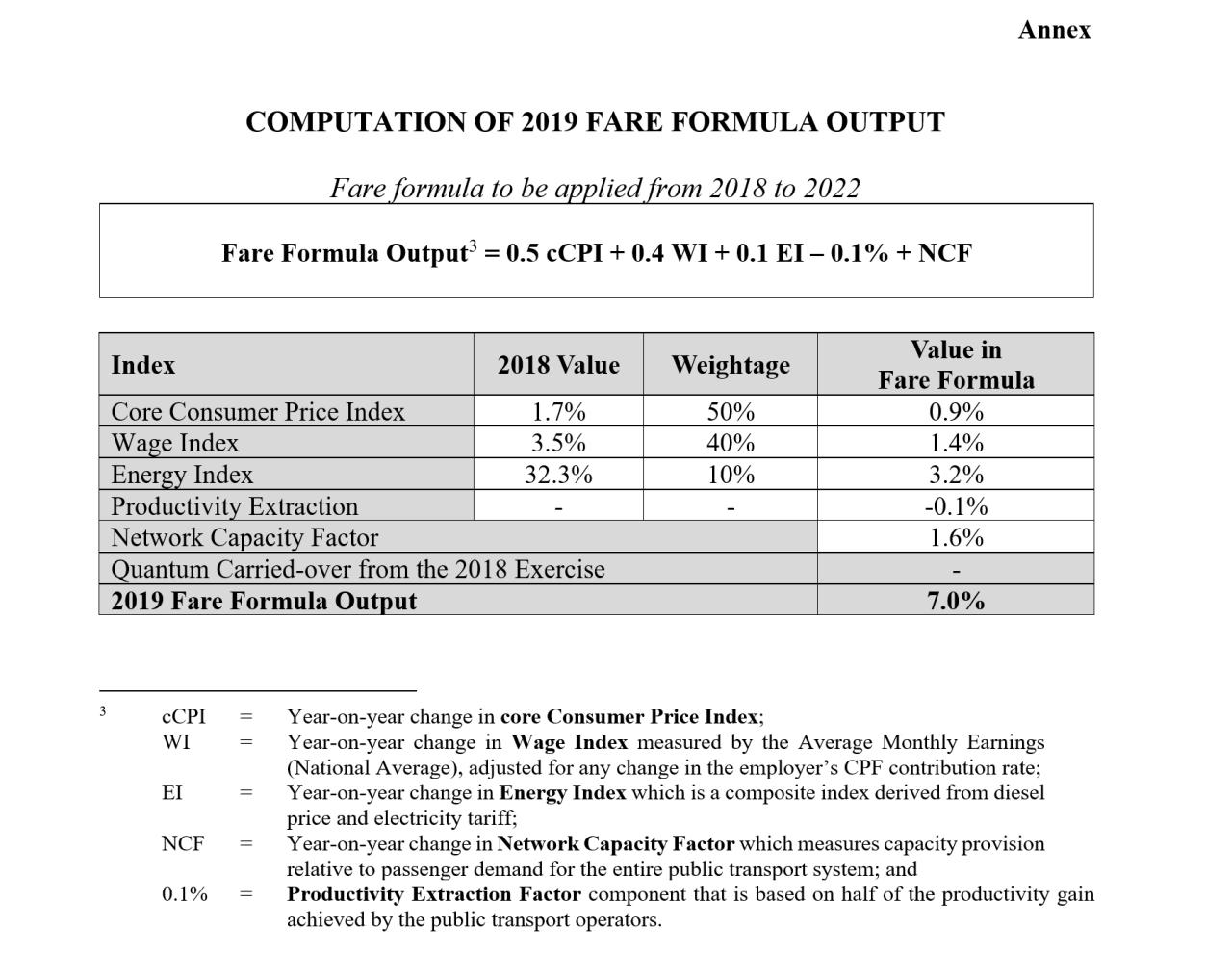Commencement Of 2019 Fare Review Exercise
The Public Transport Council (PTC) has commenced the annual Fare Review Exercise (FRE) for 2019.
Fare Adjustment Quantum Capped by Fare Formula
2 The new fare quantum each year is deliberated on by independent members of the Public Transport Council, chosen from a wide spectrum of society including grassroots organizations, labour unions, academic institutions, and professional services. It takes reference from the fare formula which seeks to balance fare affordability for commuters and financial sustainability of public transport operators at the same time. Based on the fare formula applicable from 2018 to 2022, the maximum allowable fare adjustment quantum for the 2019 FRE is 7.0% (Please see Annex for computation details). Public transport operators may submit their fare applications to the PTC by 23 September 2019 but this must not exceed the allowable fare adjustment quantum.
3 The largest contributing factor for the fare formula output quantum is the double-digit increase in energy prices, having rebounded 26.2% in 2017, and 32.3% in 2018. Other macroeconomic price indices in the fare formula have also increased over the past year. For example, the Wage Index, a proxy for the wage growth of public transport workers, went up by 3.5%, while the core Consumer Price Index rose by 1.7%, the highest in four years. The Network Capacity Factor (NCF) of 1.6%, which measures capacity provision relative to passenger demand for the entire public transport system, reflects the effort to provide commuters with less crowded rides over the last year.
Improved Public Transport, More Affordable Fares
4 Over the last five years, more than 1,000 buses and 200 trains were added to augment the capacity of our public transport system. Rail reliability also improved significantly. The MRT network has achieved an MKBF (Mean Kilometres Between Failure) of over 1,000,000 train-km, a more than seven-fold jump from 2015.
5 In tandem with bus and rail service enhancements, the cost of operating public transport has been increasing. In contrast, average fares today are 4 to 7 cents lower than in 2015, just before fares were reduced 8.3% for three consecutive years, in part due to the dip in energy prices from 2015 to 2017 [1]. Last year, a fare adjustment of 4.3% was granted. Over the last five years, the gap between costs and fares has been widening. This gap has, thus far, been funded by the Government [2] together with the rail operators.
6 In its deliberations of fare adjustment applications, the PTC will consider the views of commuters and relevant stakeholders, and will continue to strike a fair balance between fare affordability and the financial sustainability of the public transport system. In considering fare affordability, the PTC will pay special attention to concession groups and needy commuters. PTC will announce its decision on the fare adjustment quantum in the last quarter of 2019.

[1] The Energy Index was -15.3% in 2015 FRE, -35.8% in 2016 FRE and -26.7% in 2017 FRE.
[2] Over the next five years, the Government expects to provide $5 billion in subsidies for public bus services and spend around $4.5 billion to renew our rail operating assets.
Download Infographic - Questions you may have about FRE 2019 (JPE, 1.02 MB)
